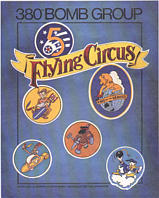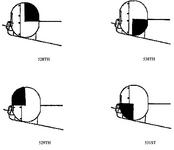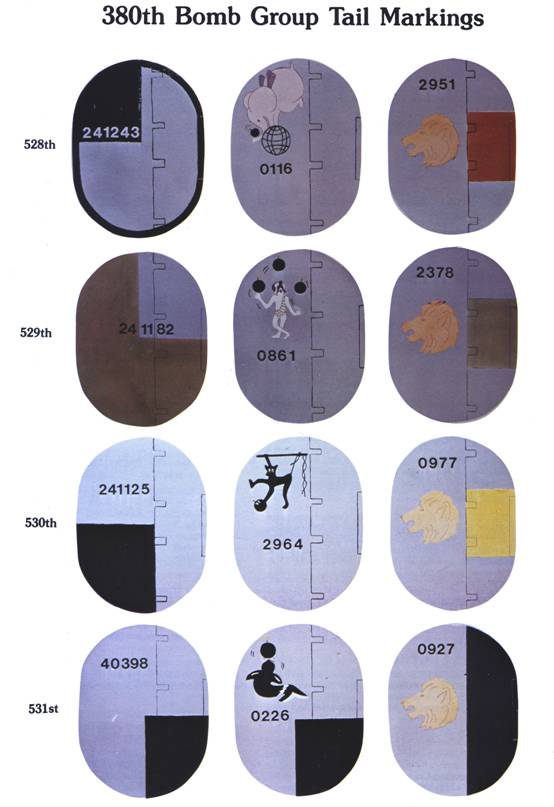
 |
380th Bomb
Group Association
|
Like most combat groups before Spring 1944, the 380th went into combat with the aircraft painted the standard OD on the upper parts and sides of the aircraft and the standard neutral gray undersurfaces. This was modified only by the national insignia and, in many cases, a name with nose art.
As in all theatres, a problem soon arises when planes needed to formate or rendezvous prior to hitting the target. If more than one group was involved, it became very difficult to tell the different units apart and some form of highly visible identification became necessary. The presence of the large twin tails on the B-24 made them the logical place to put whatever identification symbols were employed.
This situation became critical in the Southwest Pacific area when MacArthur began preparations for the Cape Gloucester invasion of New Britain Island in late November 1943. all available bomber aircraft were scheduled to take part with three B-24 groups involved. An order was therefore issued for each group to pick a distinctive marking.
The 380th chose to paint the fins and rudders of their planes in a scheme of quadrants, as shown below. These pictures, for clarity, show the scheme after Spring 1944 (Northern Hemisphere seasons) when the OD paint was removed from our aircraft. The first version was to paint the chosen quadrant white on the OD background. As noted, this was changed to black on NMF (natural metal finish) the following April-June period.

This scheme was maintained until the move of the 380th to

Source: Horton, King of the Heavies, p. 127.
In The Philippines renderings,
the 531st Squadron is shown as retaining the black quadrant from the
earlier examples. This was not true
for all aircraft but for most. Many
aircraft of the 530th also retained the lower front quarter black
quadrant.
The change from the colored quadrants to the Circus theme was based on a
380th Headquarters order dated
Return to Part VI - Table of Contents |
Return to Part VI - Introduction |